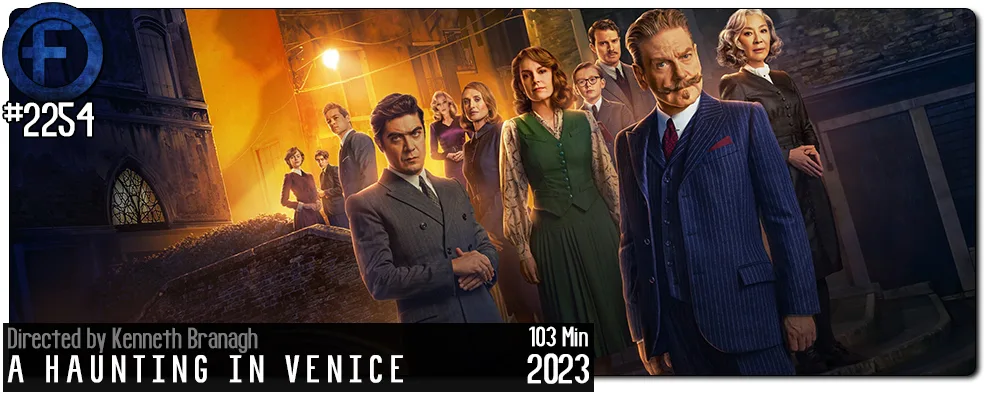Movie Review – A Haunting In Venice
Principal Cast : Kenneth Branagh, Kyle Allen, Tina Fey, Camille Cottin, Jamie Dornan, Jude Hill, Ali Khan, Emma Laird, Kelly Reilly, Michelle Yeoh, Riccardo Scamarcio, Emir El-Masry.
Synopsis: In post-World War II Venice, Poirot, now retired and living in his own exile, reluctantly attends a séance. But when one of the guests is murdered, it is up to the former detective to once again uncover the killer.
********
Nestled in the heart of the enchanting Italian lagoon city of Venice, A Haunting In Venice has – at least in our Agatha Christie-obsessed household – been the subject of much anticipation and intrigue, not only for its all-star cast but also for the appropriately scatological direction of the inestimable Kenneth Branagh. Like the canals of the famous city itself, the film’s plot weaves and lurches off into hidden pathways, unknown subplots and intriguing tangents, all of which work well to evoke a legitimate sense of Scooby Doo-ish “is this place really haunted?” mystery. The film may wrangle too hard into knots at times, and has a couple of quite large leaps in plot logic, but it’s a worthwhile jaunt back into the world’s premiere whodunnit writer and a director keen to build upon that which has come before.
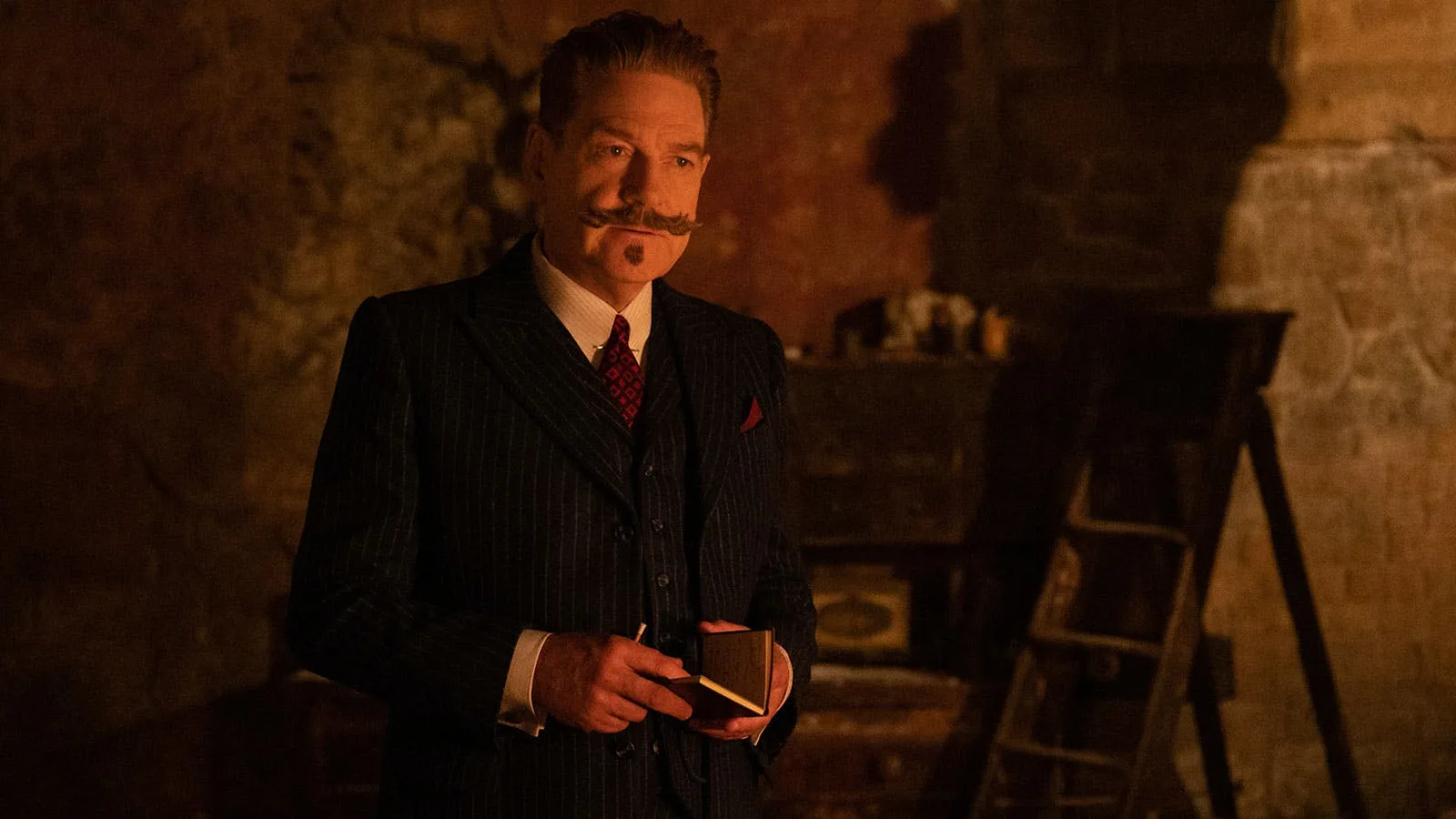
Poirot (Branagh) has given up being a detective and now resides, in retirement, in the wonderful city of Venice. When enthusiastic mystery novelist Ariadne Oliver (Tina Fey in a crackling performance) barges into his life, she invites him to accompany her to visit a séance to be conducted by legendary psychic medium Joyce Reynolds (Michelle Yeoh), in order to debunk her. They arrive at a run-down palazzo, owned by grieving mother Rowena Drake (Kelly Reilly), whose daughter Alicia killed herself following the breakup with her fiancée, Maxime Gerard (Kyle Allen), a year previous, and it is Rowena who wishes to try and commune with her departed daughter. The housekeeper, Olga (Camille Cottin), is a deeply religious woman who believes a séance is a deeply troublesome occurrence, while the family’s doctor, Leslie Ferrier (Jamie Dornan), struggles with PTSD following his service in the war. The doctor is tended to by his son, Leopold (Jude Hill), who speaks constantly of seeing ghosts lurking within the palazzo. With the spectral presences supposedly surrounding them, Poirot’s retirement is called off when not one, but two people are murdered within the course of the evening.
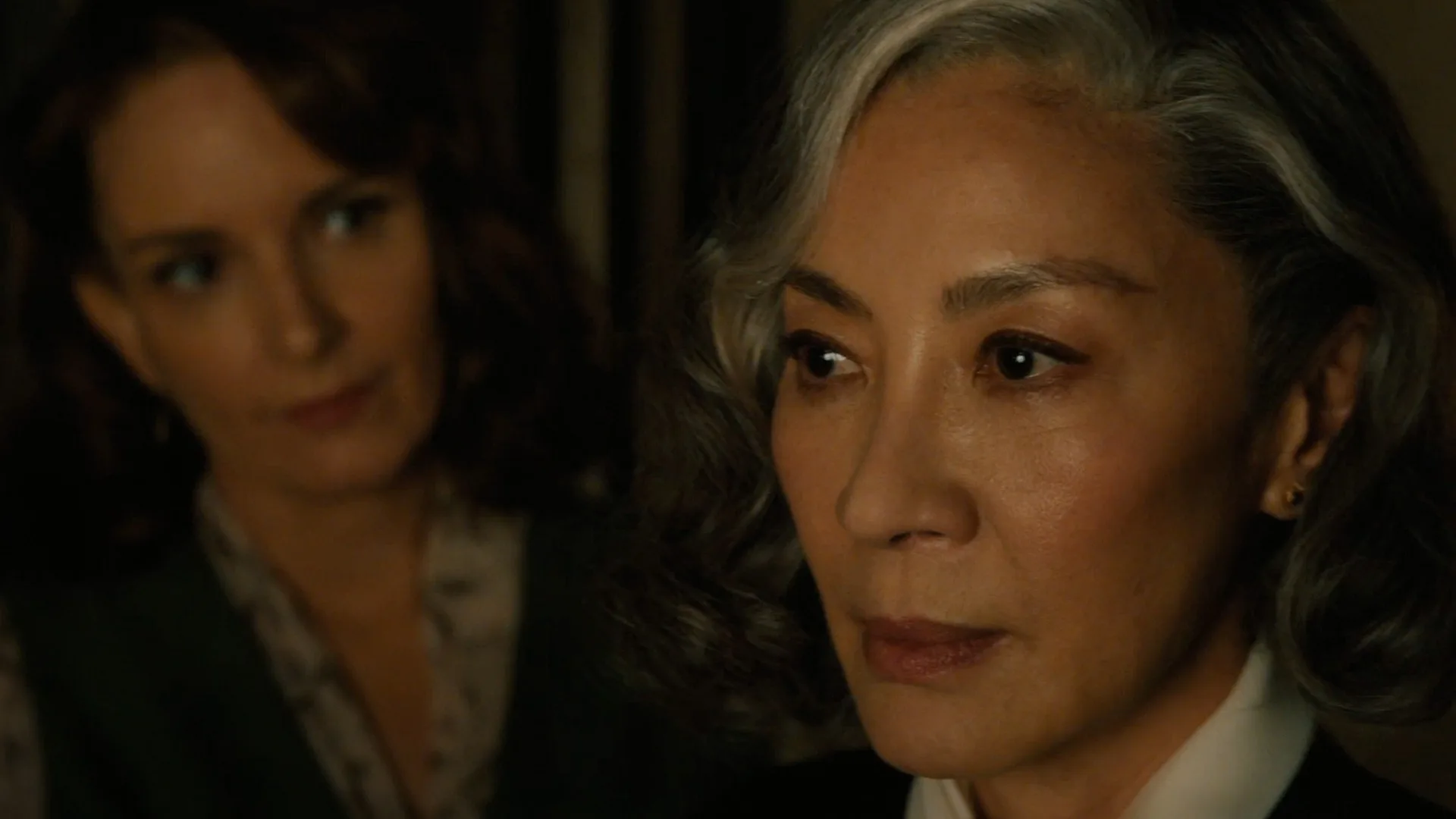
The revitalised Agatha Christie cinematic universe under the direction of Kenneth Branagh has been remarkably persistent. Despite the second film, the ill-fated Death on The Nile, almost grounding the franchise during Covid and with the off-screen troubles of one of its star players, Disney have seen fit to allow Branagh, an accomplished storyteller, actor, writer and director in his own right, opportunity to further develop the ever-evolving canvas of Agatha Christie’s most famous literary creations: Hercule Poirot. Perhaps more than any other actor I can recall, save maybe David Suchet’s indelible television portrayal, Branagh captures the heart of Christie’s debonair, fastidious detective and gives him a narrative heft appropriate to his fictional legacy. Poirot is the archetypal investigator, akin to Sherlock Holmes (although perhaps not as arrogant), and Branagh pushes the boundaries of the moustachioed investigator with regards to his character arcs and development. The actor/director has become comfortable in the skin of Christie’s valiant sleuth, and in A Haunting In Venice begins the task of pushing him well outside his comfort zone.
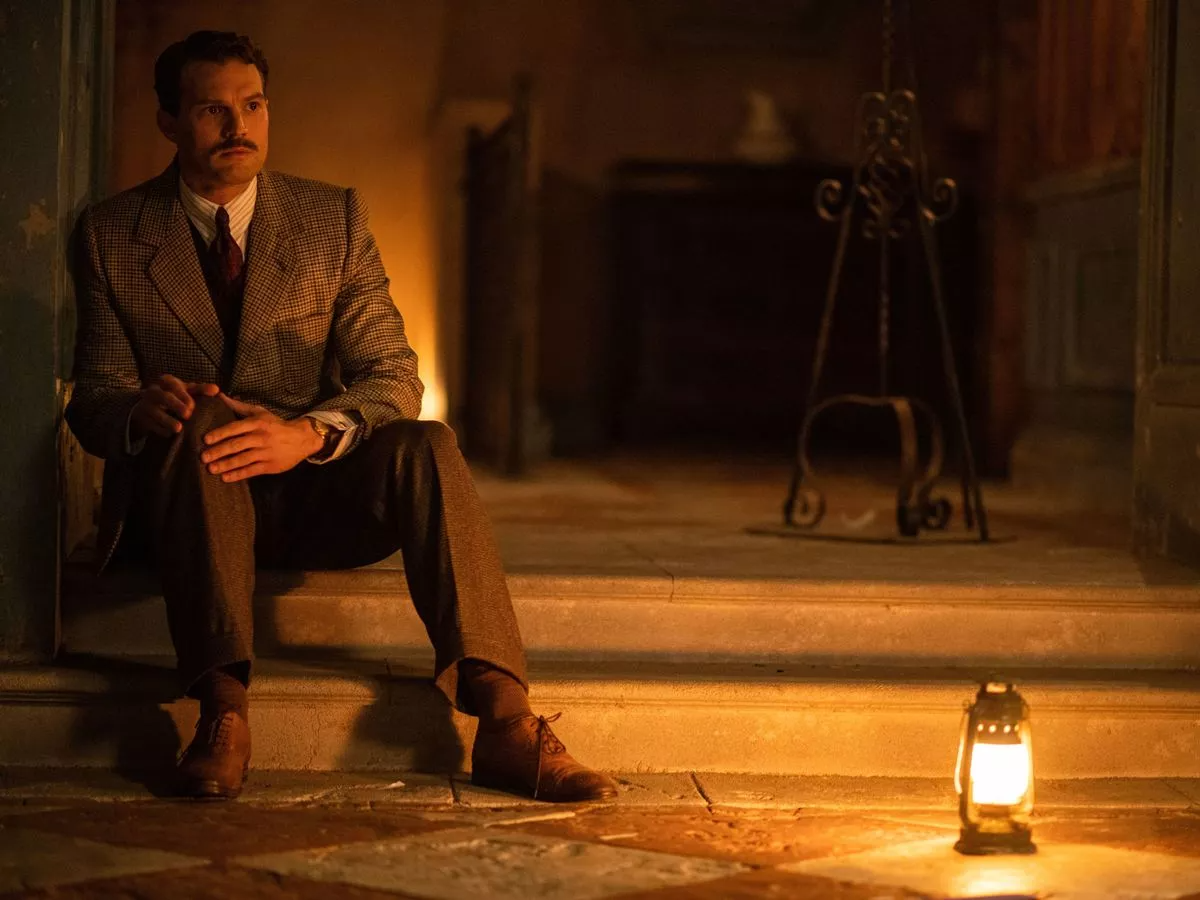
Branagh re-teams with screenwriter Michael Green to transport Poirot to Venice, an alternative locale to the film’s literary basis – Agatha Christie’s “Hallowe’en Party”, published in 1969, was set in England – and one that affords the director an opportunity to transform the normally lush, gorgeous canals and ancient structures of one of the world’s most beautiful cities into a nightmarish tableau against which an unspeakable evil lurks. Green hammers the screenplay here with a tone very similar to the Dark Castle studio films of the early 2000’s, giving each of the respective characters just enough backstory and depth to offer potential “they’re the killer” finger-pointing in the climactic reveal, although in fairness this film offers perhaps the least interesting ensemble of motivated killers yet in these films. That’s not to say they’re boring, but the film never recaptures the exotic reaches of either Death On The Nile’s fabulous cast or Murder On The Orient Express‘ invigorating narrative structure. The choice to evoke supernatural elements to the film is considerably riskier than a straightforward murder mystery but Branagh delivers just enough chilling moments to warrant the exception, and I think the film benefits greatly.
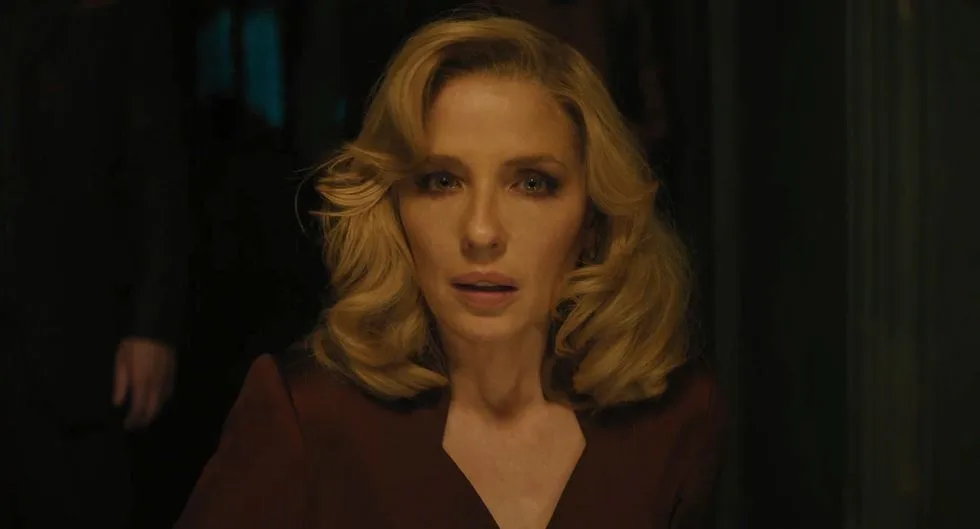
Otherwise, aside from Tina Fey and Branagh himself, the respectable cast operate within the confines of the Venetian palazzo with ease, if not always chemistry. There’s a disconnect between us and the majority of the characters here, separated from Poirot and Fey’s gabby mystery novelist role by an interconnected dour tonality that becomes a bit of a slog to wade through. Kelly Reilly is underserved as the poor, fragile Rowena Drake, Jamie Dornan’s addled Doctor character is disappointing, while Camille Cottin, Kyle Allen and a relatively silent Roccardo Scamarcio provide counterweight for the main characters. Whenever the film loses sight of Tina Fey’s character, it slips, becoming more formula than fantastical, which is disappointing. I am not the world’s biggest Tina Fey fan generally, as I find her performance style a touch grating, but she’s easily the best thing in this movie and it works more often than not because of her. Branagh, as always, understands what he needs to do and does it, and has quickly refined himself as one of the best to step into the shoes of the legendary detective.
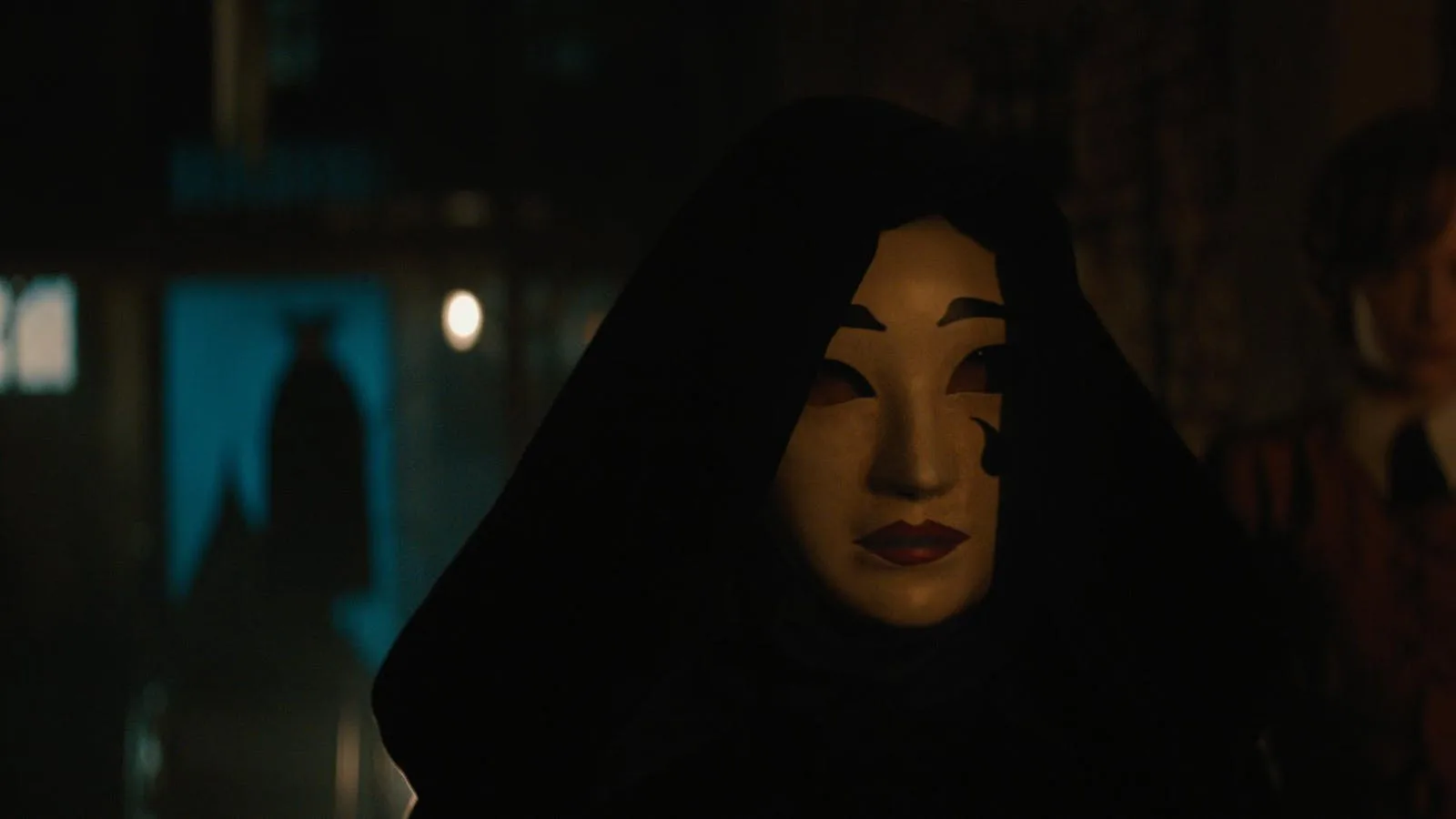
One key thing absent in A Haunting In Venice that the previous two films had was a sense of fun despite the death. This film badly needs some laughs, gags afforded to previous film’s Bouc, a loudmouthed Tom Bateman, and the fact that he didn’t make it out of the previous film alive means Poirot now has nobody to bounce off as a detective partner – Bouc was a diffident, effete character but he balanced out the tortured death and carnage of Poirot’s cases, and while the shock factor of his death in Death On The Nile echoes through this film’s lack of him, I think it was a definite mistake not to give Poirot somebody to bounce ideas off, and Fey, while excellent in her role, doesn’t quite fit into the same category. Of all the creative decisions Branagh could have made, I think the death of Poirot’s friend in the previous film had unintended consequences for the tone of this film, which is rather depressing to say the least.
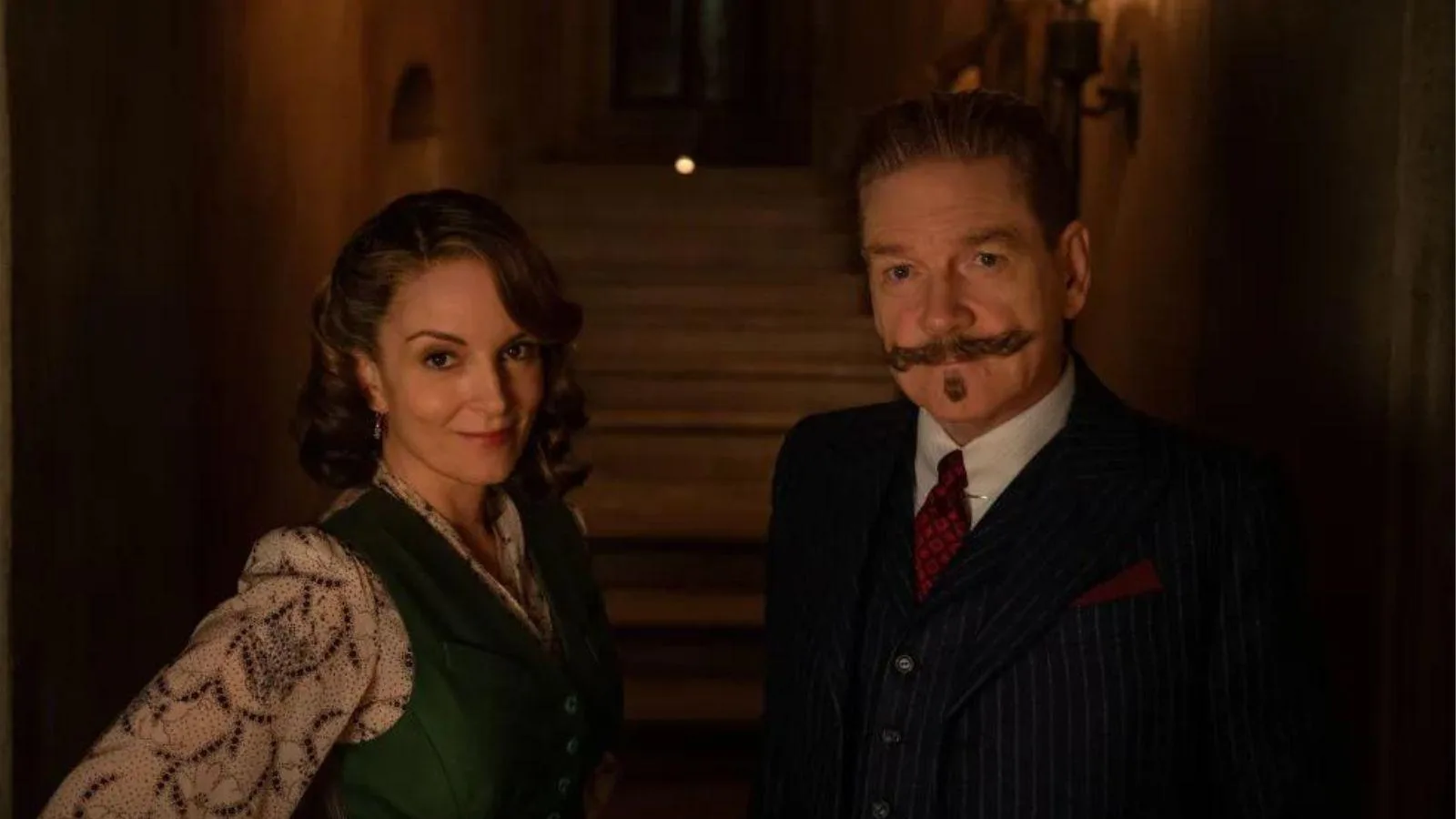
Chief benefit to the film is, however, the setting of Venice and the cavernous “haunted house” palazzo inhabited by these characters on this dark, stormy and deadly night. Exterior photography of the real city of Venice mixes superbly with the studio-bound stages and production design is quite splendid. Crevices, dark corners and the sense of a crumbling, ancient façade evoke feelings of decay and death inside the walls of the sets, mirroring the tragic tales of the characters within them, and long time Branagh cinematographer Haris Zambarloukos once again delivers a detailed, sumptuous visual palette to dig into. And the Dutch angles! So many Dutch angles here, Branagh seemingly going page-by-page in the “horror film for dummies” playbook co-authored by Alfred Hitchcock. The spooky, unknown supernatural elements add to the mystery and in terms of its visual and aural design, A Haunting In Venice knocks it out of the palazzo.
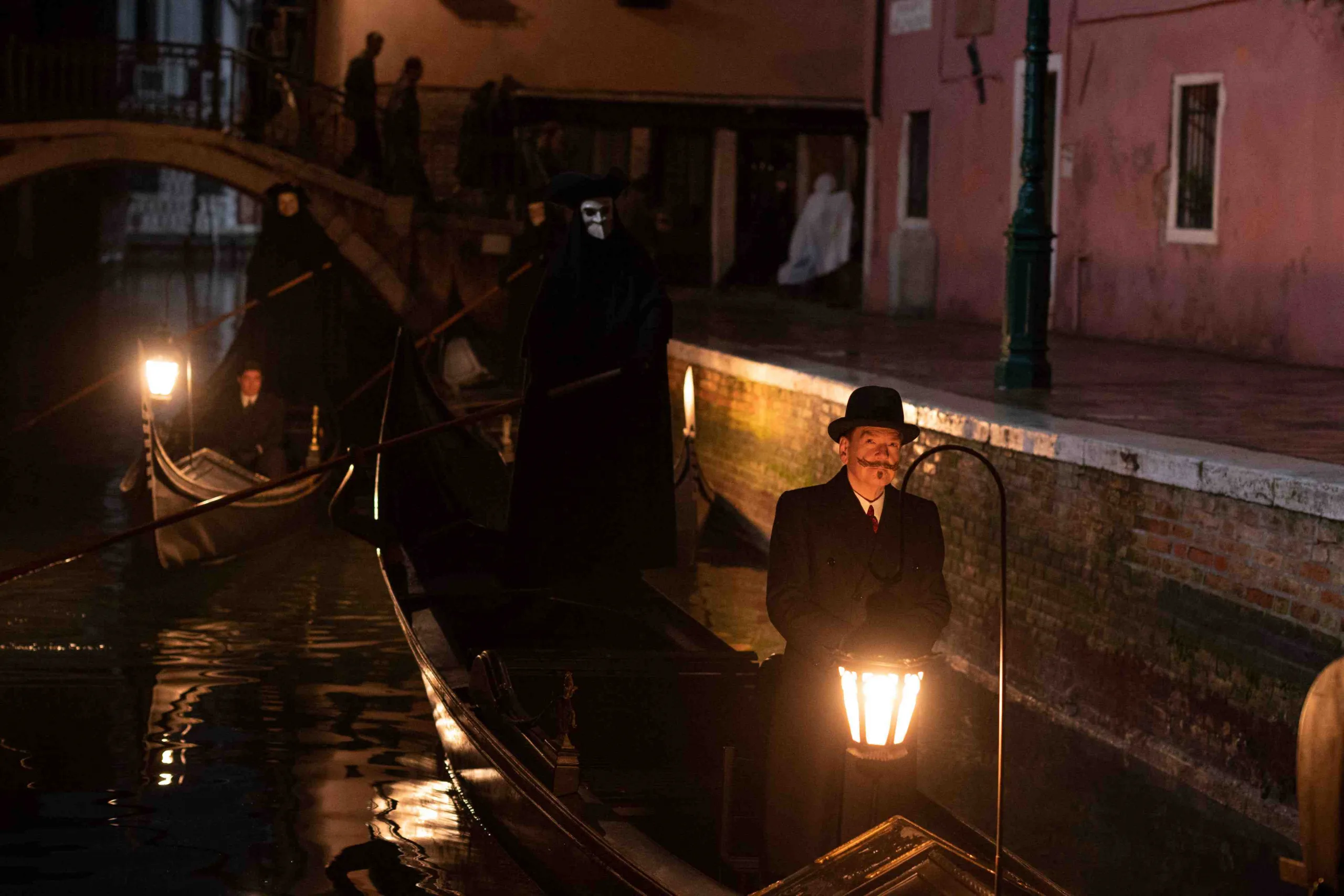
A Haunting In Venice is a perfectly serviceable film. It’s a piece of entertainment, one that won’t linger long in the memory bank (the reveal of the murderer is somewhat formulaic, in hindsight, and Christie fans will be happy to know that while the characters might be different from the literary origins, the killer remains the same) but is intriguing despite a slighter nature to the film’s progression from the previous two. The film has two or three jump-scares that might work for younger viewers, but for seasoned horror fans there’s a strong chance this one might flounder a lot for you. Branagh’s direction is tight if uneventful, the haunting subplot itself is laughably inane (one of the weirder plot leaps the story takes) and the cast all hoping to hop onto the revitalised mystery subgenre resuscitated by Rian Johnson’s Knives Out franchise dominating the zeitgeist; A Haunting In Venice isn’t a revelation but it is worth a look for Christie, Branagh and mystery completists, even if it all feels a touch bland and off-kilter.

